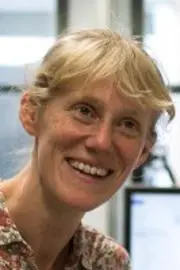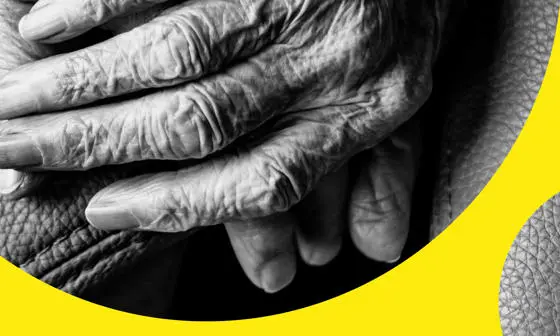Improving the lives of disadvantaged people through better measurement of poverty and inequality

[CASE] reviewed 34 studies of whether family incomes affected children’s outcomes throughout the OECD, and found that family income mattered. What is the point of having some of the world’s finest researchers if we do not listen to them? … Money matters, alongside a good education and a healthy life, to outcomes.
What was the problem?
Policymakers, practitioners, and advocates working to alleviate social disadvantages face the challenge of how to measure and analyse poverty and inequalities in a coherent, comprehensive, and systematic way. This is necessary to understand the causes and consequences of poverty and inequality, and to design policy solutions. Measurements of inequality often rely on a single dimension, such as income, which is crucial but by no means the only respect in which inequalities affect people’s lives.
A particular problem here is identifying and analysing groups that face multiple, overlapping inequalities that compound social disadvantages, which can be missed by conventional measures.
What did we do?
Over the past 25 years, research by LSE’s Centre for Analysis of Social Exclusion (CASE) has made substantial contributions to how poverty and multidimensional inequalities are understood and measured – and consequently tackled. This work has highlighted previously hidden or neglected disparities, and, in so doing, given visibility and voice to marginalised groups. CASE has done this by developing tools for measuring multidimensional inequality, while also demonstrating the central role that poverty plays as a driver of inequality.
An important strand in this research has its foundations in Nobel Laureate Professor Amartya Sen’s capability approach, combined with international human rights theory. This perspective brings together a focus on what people are able to do in their lives – their capabilities – with the principles of human rights (for example, non-discrimination and being treated with dignity and respect).
CASE researchers have developed systematic and comprehensive monitoring frameworks for social disadvantage and multidimensional inequality. Research by CASE has highlighted the phenomenon of "data exclusion", bringing visibility to neglected groups and overlapping disadvantages, and applying a unified approach to issues that have previously had disparate treatment.
To date, four frameworks have been developed: the Equality Measurement Framework (EMF), Children’s Measurement Framework (CMF), and Human Rights Measurement Framework (HRMF) for the UK; and the Multidimensional Inequality Framework (MIF), developed in conjunction with Oxfam for international use. Each includes up to ten critical dimensions, covering standards of living, health, education, and physical and legal security. The frameworks disaggregate measures by characteristics such as gender, age, ethnicity, and disability status, and also highlight data gaps.
Some vulnerable children are missing from standard monitoring exercises and are consequently overlooked in policies to address childhood disadvantage. CASE research tackled this "data exclusion" by making innovative use of administrative and matched survey data to generate new estimates, including the number of children living in households where there is domestic violence and/or substance abuse.
CASE analysis has also highlighted how "money matters" in shaping children’s life chances. A systematic review examining the relationship between poverty and children’s educational, behavioural, and health outcomes identified strong evidence of a causal link between low income and poor outcomes. This supports the retention of low income as a key marker of poverty and disadvantage, which became a major policy issue in 2016.
Another example of CASE research on particularly at-risk groups is its work on older hospital inpatients. One million older people reported poor or inconsistent standards of support with eating when in hospital in England. CASE found that disabled women in hospital aged 80 and over were more than one-and-a-half times as likely as an average older inpatient to have their need for support with nutrition neglected.
What happened?
CASE research has provided frameworks for improved monitoring of social welfare, equality, and social inclusion. These frameworks have been applied in the UK, Ireland, and within the EU. CASE has also worked with national and international NGOs and civil society groups to measure and tackle inequality.
CASE’s measurement frameworks have been incorporated into governmental and institutional approaches to measuring and reporting on inequalities. In 2015, the UK’s Equalities and Human Rights Commission (EHRC) began using four measurement frameworks for equality and human rights, three of which were CASE’s. When the UK Cabinet Office undertook a Race Disparity Audit in 2017, it consulted with CASE and built on the insights CASE shared to develop their own multidimensional and disaggregated framework. Evidence from this Race Disparity Audit was used across government in work to "explain or change" differences in outcomes for ethnic groups. CASE’s research on children’s multidimensional disadvantage also fed into work on vulnerable children undertaken by the Children’s Commissioner’s Office.
In 2016, during the course of the Welfare Reform and Work Bill, the government proposed abandoning internationally accepted measures of poverty, which include relative and absolute household income poverty, in favour of a measure that relied on factors such as life chances and household worklessness. Dr Kitty Stewart used a Freedom of Information request to reveal the strength of opposition to this change from the government’s own consultation. She briefed members of Parliament, and organised a letter from 175 academics, published in The Times, making the case for retaining income as a central measurement of poverty. CASE work was cited in debates in both Houses of Parliament. This ultimately contributed to securing an amendment to the Bill committing the government to continuing to publish income-based child poverty measures.
The work on household income and child poverty has also been used by influential national pressure groups Child Poverty Action Group (CPAG) and Shelter to strengthen their legal challenges to the UK government’s revised benefit cap. CASE evidence was extensively cited in this litigation. It has also underpinned CPAG’s other work, including toolkits to help London and Scottish school communities take action on poverty.
CASE’s work on dignity and nutrition for older patients in hospitals has been influential in developing NHS England’s work in this area, and it was cited in a debate on older people’s human rights in care in the House of Lords. It also featured extensively in national print and broadcast media, including BBC News.
Internationally, CASE research has shaped approaches to measuring and addressing multidimensional inequality. Oxfam worked with CASE in its development and implementation of the MIF, and have already piloted this in Spain and Guatemala and applied it in Vietnam, Central America, and West Africa. CASE was also commissioned to develop an inequality policy toolkit, based on the MIF, for the German development agency, GIZ, which operates in 120 countries.




